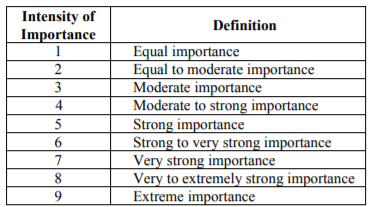Jingyi AHP
To have a more comprehensive and accurate identification and analysis of the most suitable site for construction of the quarantine centre, a multi-attribute decision analysis (AHP) is employed to derive the weights associated with the following criteria map layers.
- Economic Factor
- Accessibility Factor
- Healthrisk Factor
- Natural Conservation Factor
As seen in the AHP above, the result show that the factor that are of the most importance would be health risk factor with a weight of 58.4%. Next factor will be the accessibility factor with a weight of 26.3% and then natural conservation factor and economic factor with a weight of 10.1% and 5.2% respectively.
The consistency ratio (CI/RI) is also below 0.1, which indicates that the AHP analysis above do not need to be re-evaluated and is at an acceptable range of 0.087 (≈ 9%).
The weights obtained above will be used to combine all 4 factor layers to determine the best site to construct the quarantine centre.
AHP Process
Before doing AHP, I first came up with the priority order of the 4 factors as shown below:
- Healthrisk Factor
- Accessibility Factor
- Natural Conservation Factor
- Economic Factor
With 1 being the most prioritized factor and 4 being the least prioritized factor
Then, I used a scale for the pairwise comparison conducted above as shown below.
Additional Notes
Limitations of AHP
In AHP, using pairwise comparison may not be accurate as in certain case, a low score on one criterion can be compensated by a high score on another.


